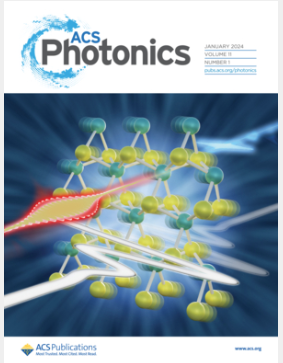表面处理工程使高效 Perovskite 发光二极管的调制速度显著提高
IF 6.5
1区 物理与天体物理
Q1 MATERIALS SCIENCE, MULTIDISCIPLINARY
引用次数: 0
摘要
透镜发光二极管(PeLED)已成为光通信中高速数据驱动照明光源的理想候选器件,但影响 PeLED 调制速度的机制却鲜有讨论。虽然有报道称可以通过减小器件面积来提高调制带宽,但这往往会受到几何尺寸的限制并降低发光效率。在此,通过在不同溶剂中对 3-三氟甲基-苄基碘化铵(3-TFBzAI)进行表面处理,我们可以在过氧化物上形成钝化/绝缘层,从而提高/降低 PeLED 的效率和调制速度。根据经过不同表面处理的器件,利用阻抗分析构建了影响 PeLED 调制速度的等效电路模型。使用氯苯/异丙醇(CB/IPA)混合溶剂进行最佳后处理,不仅能通过有效的再结晶和表面钝化提高发光效率,更重要的是,还能通过有利的电荷注入和减少寄生电容提高调制速度。尤其是在小面积器件中,这种改进更为明显;在调制速度不受有源尺寸影响的情况下,0.25 平方毫米以下的近红外 PeLED 的 3 dB 带宽最多可提高 77.6%,由此产生的平均外部量子效率为 11.67%,3 dB 带宽为 1.9 MHz。本文章由计算机程序翻译,如有差异,请以英文原文为准。

Surface Treatment Engineering Enables Highly Efficient Perovskite Light-Emitting Diodes with Significantly Enhanced Modulation Speed
Perovskite light-emitting diodes (PeLEDs) have emerged as promising candidates for high-speed data-driven illumination sources in optical communication, but the mechanisms influencing the modulation speed of PeLEDs are rarely discussed. Although it has been reported to increase the modulation bandwidth by reducing the device area, this is often geometrically limited and reduces the luminous efficiency. Here, with the surface treatment of 3-trifluoromethyl-benzylammonium iodide (3-TFBzAI) in different solvents, we can create a passivation/insulating layer on perovskites to promote/decrease the efficiency and modulation speed of PeLEDs. Based on devices with different surface treatments, an equivalent circuit model to affect the modulation speed of a PeLED is constructed using impedance analysis. The optimal post-treatment with chlorobenzene/isopropanol (CB/IPA) mixed solvent not only facilitates the luminous efficiency through efficient recrystallization and surface passivation but also, more importantly, boosts the modulation speed through favored charge injection and reduced parasitic capacitance. In particular, this improvement is more pronounced in small-area devices; up to a 77.6% increment of 3 dB bandwidth is realized in below 0.25 mm2 near-infrared PeLEDs with the resulting average external quantum efficiency of 11.67% and a 3 dB bandwidth of 1.9 MHz when the modulation speed is not affected by the active size.
求助全文
通过发布文献求助,成功后即可免费获取论文全文。
去求助
来源期刊

ACS Photonics
NANOSCIENCE & NANOTECHNOLOGY-MATERIALS SCIENCE, MULTIDISCIPLINARY
CiteScore
11.90
自引率
5.70%
发文量
438
审稿时长
2.3 months
期刊介绍:
Published as soon as accepted and summarized in monthly issues, ACS Photonics will publish Research Articles, Letters, Perspectives, and Reviews, to encompass the full scope of published research in this field.
 求助内容:
求助内容: 应助结果提醒方式:
应助结果提醒方式:


